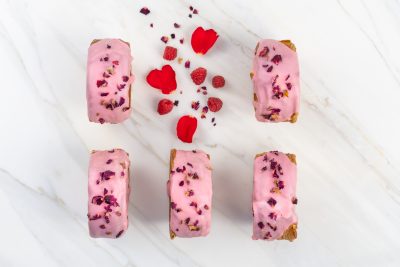Catering for intolerances

I was recently asked to present to a team of 10 chefs that will represent England in the largest chef’s competition worldwide how to successfully compete in the creation of a vegan dish. Here is what I said…
I started trading in 2013 with one cake in one market. Today my team and I have developed more than 300 recipes that are vegan, gluten free and/or sugar free. When chefs, and pastry chefs, walk into our premises I can assure you that they go through an existential crisis, where no fish or meat is handled and moreover, they are asked to create contemporary pastry without eggs, dairy or sugar. But with the current market change of moving into plant-based products, our chefs need to be able to adapt and learn these new skills progressing from the traditional culinary education that most of them have!
So where is the free-from industry at the moment? In the 8 years that I am in the business I have identified 3 levels of vegan foods/recipes:
Bloggers and home cooks - where they will use ingredients in approximation and experimentation to write about it and it’s all content/image-based.
Artisan free from bakeries – this is where ARAPINA belongs and one will see a lot of initiatives taking place on the high street, but sadly the majority of us disappear in a short period since each one of us underestimates the effort and the current lack of knowledge on recipes.
Mass scale - found in supermarkets where neo-veganism is at full effect. And what I mean about neo-veganism is the creation of burger patties and cheeses made out of powders and chemicals, in a factory far away from us and behind closed doors!
So, if I was to inspire you on how to create free from recipes on an artisan level, I would bring your attention to 3 things:
1. Understanding: Understand what is an allergen and what is not. For example, soya is an allergen but soy lecithin is not.
2. Knowledge: Deconstruct your recipes to understand what ingredient offers what, and how can they be substituted. For example, eggs keep your mix together but so does banana.
3. Education: Look out for the protein and fat content of your substitutes as these may be weaker or stronger performing ingredients based on their qualities. For example, potato protein 500 is higher in protein than any other vegetable protein out there, and therefore the only one appropriate for vegan macarons.
I hope that the above offers a great perspective on where the renowned industry of veganism rests at the moment and how we can all find a place, with the right expectations aligned within.
Michaela Pontiki








